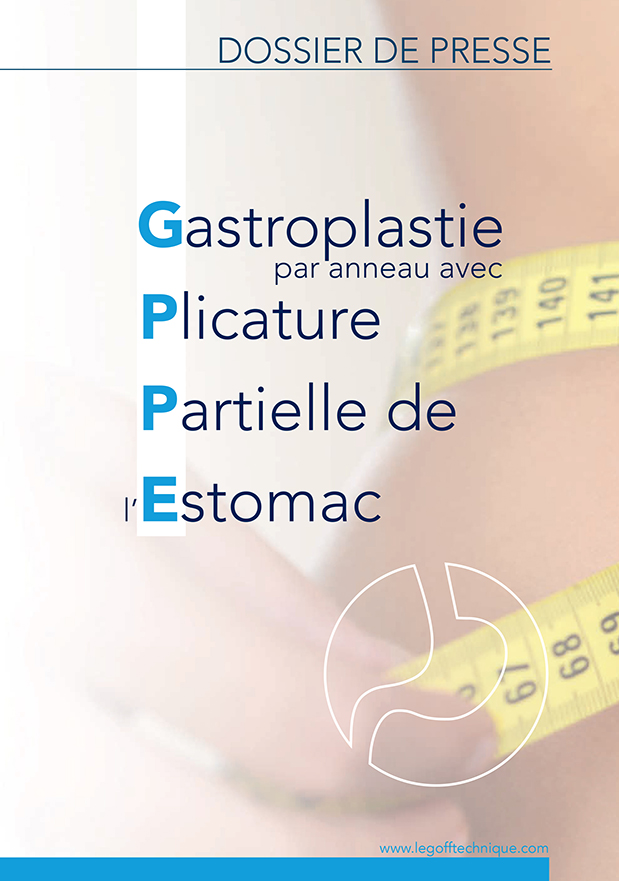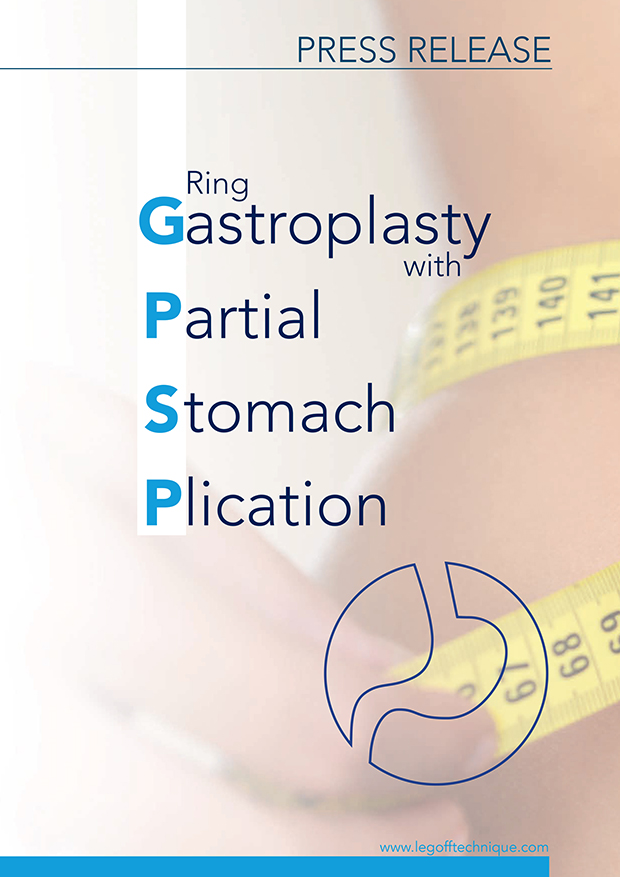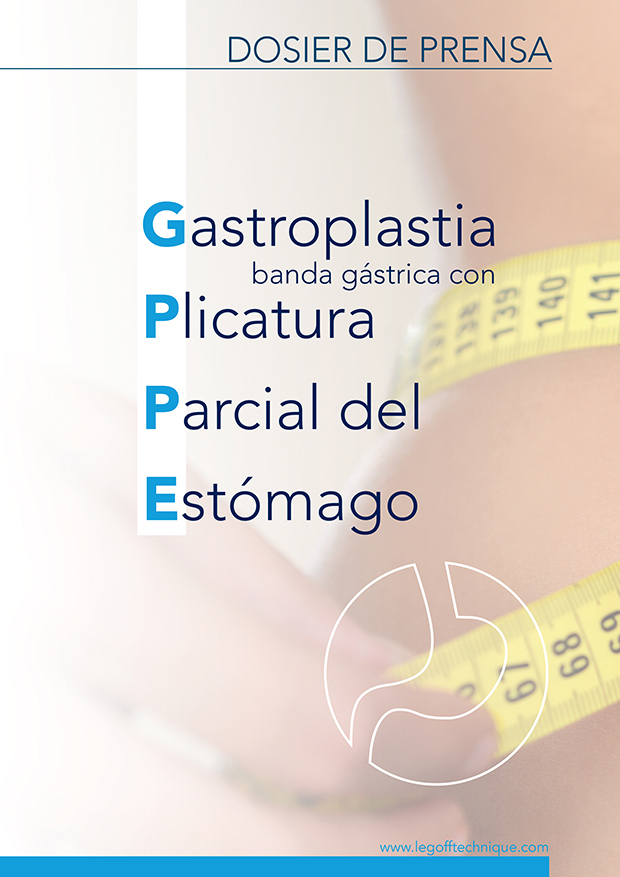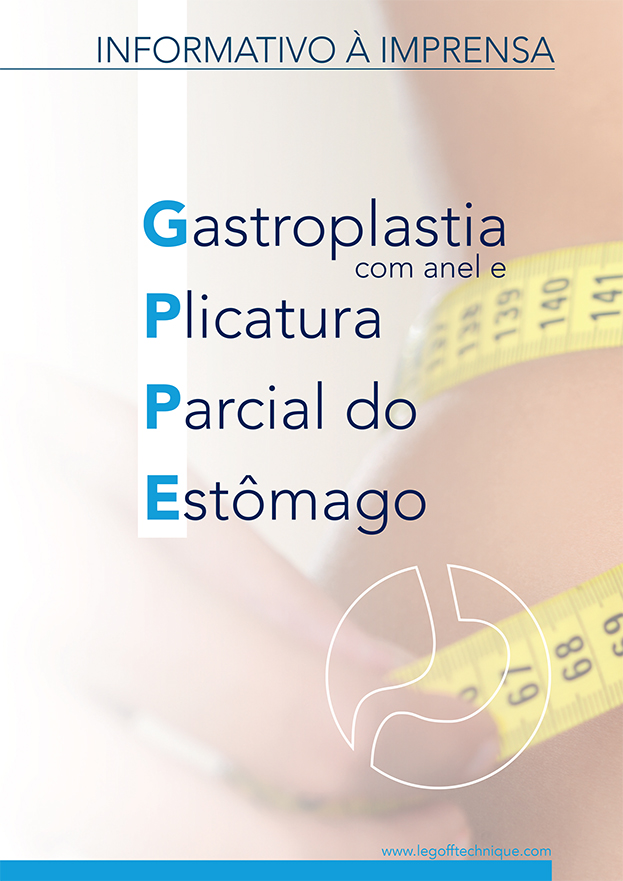Dr. Jean-Yves Le Goff
Obesity surgery in PAris
FAQ
FAQ
Obesity surgery in PAris
What does the Le Goff Technique (GPSP) surgery involve?
This is gastric band surgery with 5 technical aspects:
• Retrogastric dissection (the band is better held back).
• Partial plicature of the stomach reducing the size of the stomach leading to effacement of the greater tuberosity like in sleeve surgery but without real ablation of the stomach. This is a virtual ablation.
• Reduction of the size of the stomach under the band due to partial plication of the stomach.
• Stimulation by the gastric valve, which fixes the band, of the hunger centres in the lower oesophagus.
• Fat and the nerve endings from the left vagus nerve are removed, leading to reduction in the evacuation of the stomach under the band.
These 5 technical aspects increase the efficiency of the Le Goff Technique. All this means that patients are not as hungry or even not hungry at all, and that weight loss will be hugely facilitated.
How much weight loss can I expected in the first year?
It will be considerable if you follow our recommendations and advice: nutritional advice, possible psychological treatment, resumption of sport (exercise bike, swimming, aquagym, aquabike).
Statistically on average, of nearly 800 patients operated, 60 to 70 % of excess weight is lost in the first year. This weight loss will continue to rapidly reach 100% of excess weight loss for the most motivated patients.
When is the band inflated, and how?
Inflation is necessary for about 90% of patients. Only 10% of them will lose all their excess weight without the need to inflate the band using in the Le Goff Technique.
Thus, for most patients, the band will never be inflated before 4 to 6 weeks after the surgical procedure so that it is as solid as possible (some patients have had the same montage, band and unit, for 19 years).
The band is inflated by the surgeon under local anaesthetic through the skin (the band unit is injected deeply through the skin), in radiology with a barium swallow, used to check the passage of liquid through the band. The adjustment takes about 15 to 20 minutes.
What complications can be encountered with the Le Goff Technique (GPSP)?
The two serious complications that can be encountered are rare and entirely avoidable. They are gastric dilatation above the band and erosion of the stomach by the band.
These two exceptional complications are linked to the fact that the patients vomit several times a day (three, four times). Most patients do not vomit or do so only exceptionally, once to three times a week, which poses no problem.
With the Le Goff Technique, gastric dilatation represents 13 cases in 794 evaluated over a period of 19 years, or less than 0.2%. This figure should be compared to 30% dilatation when the band is not fixed.
With the Le Goff Technique, gastric erosion represents 8 cases in 794, or 0.1%, a very low rate compared to high gastric erosion figures for gastric bands that are not fixed. This is linked to the fact that the patient vomits several times a day even when full. Constant vomiting leads to weakening of the stomach walls and the band finishes by appearing inside the stomach without the patient realising. The patient only notices that the band is no longer effective.
Is there an age limit for obesity surgery?
According to HAS recommendations, the age for patients undergoing bariatric surgery is between 18 and 65 years old. In practice however, 16 to 17-year-old adolescents who have finished their growth can be operated after authorisation from the medical council (prior application) at the CNAM.
Similarly, for patients over the age of 65, prior authorisation can enable their lives to be considerably improved with the Le Goff Technique. The comorbidity factors improve or can even be completely cured.
An age limit is fixed arbitrarily at 65 but it is the physical health of the patient that is the most important factor.
Does the Le Goff Technique (GPSP) pose significant risks?
No, as firstly post-operative mortality is 0 in 20 years and secondly, the complications are very rare. Furthermore, all the complications are entirely avoidable. The main issue is vomiting which is responsible for all the other complications.
Vomiting is entirely avoidable for many patients by following some simple rules:
• Eat slowly
• Chew well for 30 seconds
• Wait 30 seconds between each mouthful
• Mouthfuls should not be larger than the diameter of the inflated band
• Do not eat and drink at the same time
If the patient continues to vomit (> 1 to 3 times /week) despite following these rules, moderate deflation of the band should be performed in radiology by the surgeon who knows the patient best.
The large majority of patients do not vomit or do so rarely, meaning that the band procedure is well tolerated and leads to very few complications.
Learn more about the most frequent and rare but serious complications involved in traditional gastric band surgery
The risks of complications with the Le Goff Technique bear no comparison with traditional gastric band surgery and are very low compared to those of Sleeve or Bypass Surgery. It should be noted that in 20 years, only 9 cases of gastric dilatation and 8 cases of erosion have needed a repeat operation with the Le Goff Technique.
How long is hospitalisation with the Le Goff Technique (GPSP)?
Hospitalisation lasts 2 days on average.
How long does it take to recover after the surgery?
Patients undergoing the Le Goff Technique recover very quickly:
• 10% of patients operated go home the next day in full health
• The huge majority of patients go home 2 days after the operation
How long does the operation last?
The Le Goff Technique operation lasts 1½ to 2 hours on average. It includes a traditional gastric band surgery plus the 4 additional techniques.
Is a general anaesthetic absolutely necessary?
A general anaesthetic is obligatory as the stomach is inflated with CO2 laparoscopically, making it contraindicated for an epidural anaesthetic.
Will I have big scars?
No. The Le Goff Technique is performed laparoscopically, meaning three small 5 mm incisions, one 1 cm incision for the optical camera and a 1.5 cm incision for passing the band which is 1.5 cm wide.
In 20 years of performing the Le Goff Technique, no conversion to laparotomy has ever been necessary. The risk is not entirely absent however. Techniques in plastic surgery ensure the highest chances of minimally visible scarring.
Some are even practically invisible.
Will I be able to eat normally after undergoing the Le Goff Technique (GPSP) surgery?
Normal eating is restored gradually:
• The day following the operation, after an x-ray examination, food intake is liquid. Then, 2 to 3 hours later, the diet becomes semi-liquid (soup, yoghurt, fruit compote). Finally, 12 days after the operation it returns to a normal mixed diet.
• Small mouthfuls of solids from the 13th day until the band is inflated for the first time.
• Mixed diet for 2 to 3 days and then small mouthfuls of solids.
• Patients eat less in terms of quantities but can resume a normal social life such as going to a restaurant. The nutritional quality remains the same.
The ultimate goal of the Le Goff Technique is a surgical procedure with the band inflated as little as possible, even if weight loss is considerable, even if eating habits and the psychological relationship with food have changed and even if a sporting activity has been resumed.
Is the Le Goff Technique (GPSP) reversible?
Yes, the Le Goff Technique and the adjustable band can be removed in the rare cases where:
• The patient cannot support the band (extremely rare – 1 case in 20 years)
• Very rare complications require ablation of the band (8 cases of gastric erosion in almost 20 years)
After ablation of the band, patients recover an almost identical anatomy and physiology.
Does the weight loss last over time?
Yes, of course. The Le Goff Technique has been performed for almost 20 years. Many patients have kept their band without being re-operated for more than a decade, up to 20 years for the first patients operated. Many patients lost 60% of their excess weight at 10 years.
In fact, 12 years after the operation, 174 patients have lost 100% of their excess weight. The Le Goff Technique offers excellent results that are effective and long-lasting.
Can pregnancy be envisaged after an operation using the Le Goff Technique (GPSP)?
Yes, the Le Goff Technique is completely compatible with pregnancy.
Considerable weight loss significantly enhances fertility. Many “band babies” have been born when many women without contraception fell unexpectedly pregnant following certain weight loss.
Once pregnant, the surgeon will deflate the band slightly, especially for women suffering from morning sickness in the first trimester. It is not usually necessary to deflate the band as there are almost no deficiencies with the Le Goff Technique.
Is it possible to put on weight after surgery with the Le Goff Technique (GPSP)?
Very rarely and far less often than with sleeve or bypass surgery (40 to 50% of patients put weight back on between 2 and 5 years after the operation), because it is important to follow a strict and difficult diet so as not to be among the 50% of patients who regain all their weight.
The Le Goff Technique treats in depth the main causes of severe obesity (nutritional, psychological treatments, resumption of sports).
How much does the Le Goff Technique (GPSP) surgery cost?
If the health insurance grants prior authorisation, the hospitalisation is paid for by the social welfare.
The surgical and anaesthetic fees may be reimbursed fully or partially depending on your private health insurance.
A pre-operative estimate will be provided automatically on consultation.
In rare cases where prior authorisation is not granted or the patient is not a social security member, the full cost of the surgery (hospitalisation +prosthesis + surgical and anaesthetic fees) will have to be paid. A pre-operative estimate will be given to you before the operation.
SPECIFIC CASE:
If the BMI is between 30 and 35 with proven comorbidity factors (hypertension, diabetes, debilitating osteoarthritis, sleep apnoea, etc.), this indication is approved by the social security and by worldwide scientific studies, but not paid for by the social welfare. The patient is considered not insured by social security (see above).
Will I be able to practice sports after the Le Goff Technique (GPSP) ?
Yes indeed.
Walking is particularly recommended.
From the 17th day after surgery, the patient must use an exercise bike 10 to 15 minutes per day, 4 to 5 times a week without forcing.
From the 24th day after surgery, the patient should:• Swim once a week (or more)
• Do aquabike once a week (or more)
• Do aquagym once a week (or more)
After significant weight loss, all other sports can be practiced as the joints will not be damaged by the excess weight being carried.



